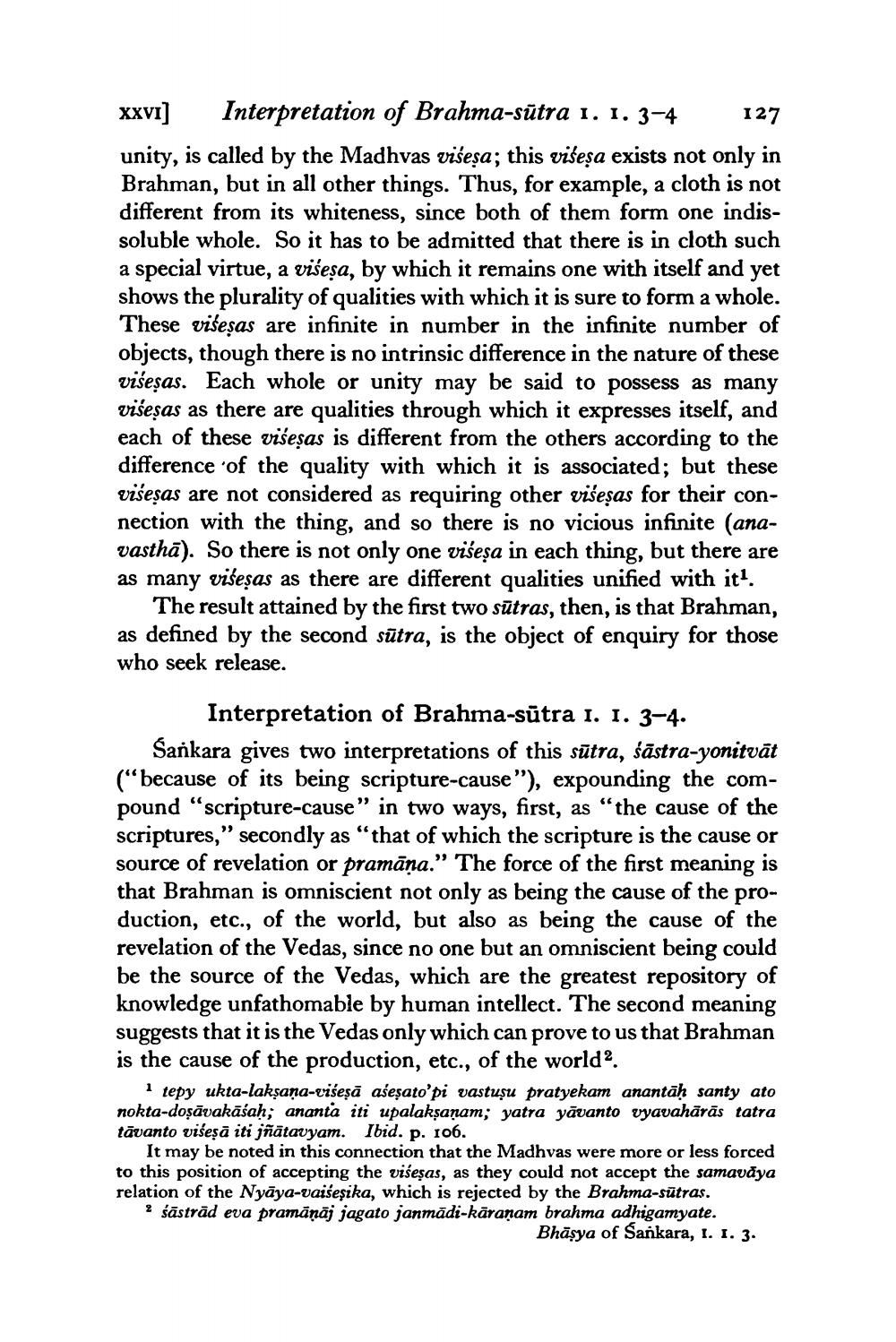________________
XXVI]
Interpretation of Brahma-sūtra 1. 1. 3–4
127
unity, is called by the Madhvas visesa; this viseșa exists not only in Brahman, but in all other things. Thus, for example, a cloth is not different from its whiteness, since both of them form one indissoluble whole. So it has to be admitted that there is in cloth such a special virtue, a višesa, by which it remains one with itself and yet shows the plurality of qualities with which it is sure to form a whole. These visesas are infinite in number in the infinite number of objects, though there is no intrinsic difference in the nature of these visesas. Each whole or unity may be said to possess as many višesas as there are qualities through which it expresses itself, and each of these visesas is different from the others according to the difference of the quality with which it is associated; but these višesas are not considered as requiring other visesșas for their connection with the thing, and so there is no vicious infinite (anavasthā). So there is not only one višesa in each thing, but there are as many visesas as there are different qualities unified with it1.
The result attained by the first two sūtras, then, is that Brahman, as defined by the second sutra, is the object of enquiry for those who seek release.
Interpretation of Brahma-sütra I. I. 3-4.
Sankara gives two interpretations of this sūtra, śāstra-yonitvāt ("because of its being scripture-cause"), expounding the compound "scripture-cause" in two ways, first, as "the cause of the scriptures," secondly as "that of which the scripture is the cause or source of revelation or pramāṇa." The force of the first meaning is that Brahman is omniscient not only as being the cause of the production, etc., of the world, but also as being the cause of the revelation of the Vedas, since no one but an omniscient being could be the source of the Vedas, which are the greatest repository of knowledge unfathomable by human intellect. The second meaning suggests that it is the Vedas only which can prove to us that Brahman is the cause of the production, etc., of the world2.
1
tepy ukta-lakṣaṇa-viseṣā aseṣato'pi vastuşu pratyekam anantāḥ santy ato nokta-doṣāvakāśaḥ; ananta iti upalakṣaṇam; yatra yavanto vyavahārās tatra tāvanto viseṣā iti jñātavyam. Ibid. p. 106.
It may be noted in this connection that the Madhvas were more or less forced to this position of accepting the visesas, as they could not accept the samavaya relation of the Nyāya-vaiseṣika, which is rejected by the Brahma-sūtras.
2 śāstrād eva pramāṇāj jagato janmādi-kāraṇam brahma adhigamyate. Bhasya of Sankara, I. I. 3.




